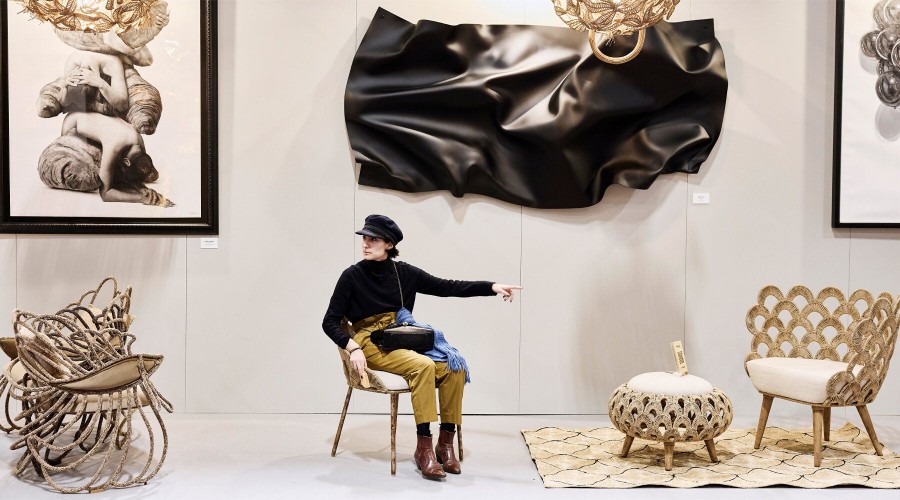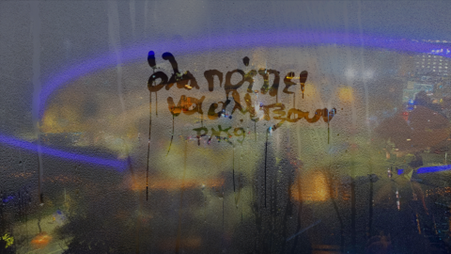Τα «φώτα της μόδας» επάνω στην κοινωνία
DS.WRITER:
Christina Ioakeimidou
Κεντρική Εικόνα: Από την επίδειξη μόδας"It’s Only a Game" (Alexander McQueen, 2005) | Πηγή: cdn.mos.cms.futurecdn.net
Η μόδα πάντα επηρέαζε το κοινωνικοπολιτικό γίγνεσθαι. Πρόσωπα όλου του καλλιτεχνικού φάσματος, πολιτικοί και «κοινοί θνητοί», μπορούν, μέσω της επιλογής του ρούχου, να εκφράσουν τον εαυτό τους, τη στάση ζωής τους, ακόμα και την πολιτική τους τοποθέτηση ή την κυριαρχία τους. Προφανώς, πίσω από πολλές μεμονωμένες επιλογές βρίσκονται οι τάσεις, που διαμορφώνονται από τους μεγάλους οίκους μόδας, οι οποίοι, ιδιαίτερα τα τελευταία χρόνια, δίνουν φωνή και τροφή για σκέψη σχετικά με πολλά σύγχρονα προβλήματα. Έχουν, όμως, όλοι οι fashion designers την ικανότητα να βλέπουν την κοινωνία χωρίς παρωπίδες και να αφουγκράζονται τις αλλαγές που έρχονται; Η απάντηση σε αυτό το ερώτημα είναι αρκετές φορές αρνητική, χωρίς, ωστόσο, να είναι αφοριστική για αυτούς που μπορούν να ακολουθήσουν τη φυσική πορεία των πραγμάτων και να σταθούν επάξια στις εκάστοτε περιστάσεις, παραγκωνίζοντας το κέρδος έναντι της κοινωνικής ευαισθητοποίησης.
Mόδα και περιβαλλοντική συνείδηση
Είναι προφανές, ότι η δυσκολία ενός μεγάλου οίκου να προσαρμοστεί στις περιστάσεις απορρέει από την πολιτική του κέρδους και του κοινού στο οποίο το εκάστοτε brand στοχεύει. Αυτό μπορεί να γίνει ευκολότερα κατανοητό, αν αναλογιστούμε τον ντόρο που ξέσπασε όταν τα «βαριά χαρτιά» της βιομηχανίας της μόδας, όπως οι Prada, Versace, Gucci, Armani, και πιο πρόσφατα ο Valentino, απαγόρευσαν τη χρήση αληθινής γούνας, μια κίνηση που συμβάδιζε -και εξακολουθεί να συμβαδίζει- με τον μεγάλο αγώνα των τελευταίων ετών για τη διάσωση του πλανήτη και την περιβαλλοντική ευαισθητοποίηση. Μετά από αυτή την κίνηση, ξαφνικά σχεδόν, η αληθινή γούνα θεωρήθηκε εκτός μόδας, και η αντικατάστασή της από άλλα υλικά μονοπωλεί το ενδιαφέρον καταναλωτών και σχεδιαστών. Η Stella McCartney είναι ίσως το πιο γνωστό παράδειγμα οικολογικής συνείδησης στον χώρο της μόδας, με την προώθηση, εδώ και αρκετά χρόνια, περισσότερο βιώσιμων πρώτων υλών και την καθολική απαγόρευση της χρήσης γούνας, δέρματος και άλλων ζωικών προϊόντων στις κολεξιόν της. Τα παραπάνω αντικαθίστανται από ανακυκλώσιμο πλαστικό, μανιτάρια αντί δέρματος και μετάξι προερχόμενο από ιστό αράχνης.
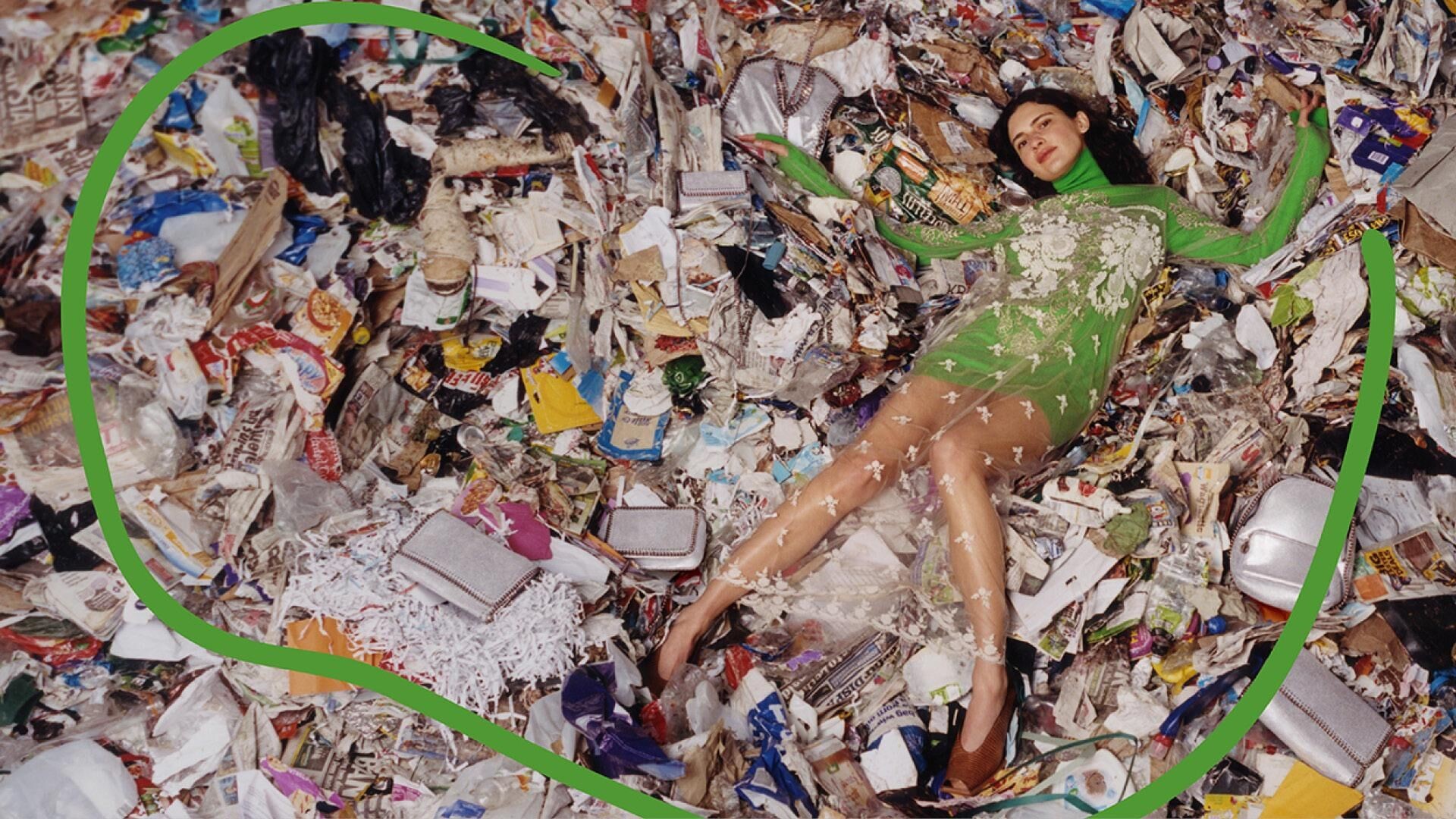
Από καμπάνια της S. McCartney το 2017 | Πηγή εικόνας: harpersbazaararabia.com
Αναμφισβήτητα, παρόλο που δεν ακολουθούν όλοι οι fashion designers την ίδια πολιτική, μεγάλες εβδομάδες μόδας τείνουν να απαγορεύσουν τη γούνα, ανεξαρτήτως της προσωπικής βούλησης του κάθε οίκου. Τελευταίο παράδειγμα αυτής της οικολογικής στροφής είναι αυτό της Εβδομάδας μόδας της Κοπεγχάγης (Άνοιξη/Καλοκαίρι 2023), η οποία ανακοίνωσε ότι θα διεξαχθεί αυτή τη φορά fur-free. Η απόφαση αυτή, αδιαμφισβήτητα, πλήττει τεράστια οικονομικά συμφέροντα, όμως παράλληλα δίνει ώθηση για μια μαζική αντιμετώπιση ενός μεγάλου προβλήματος.
Φυσικά, η επιρροή που η μόδα μπορεί να ασκήσει δεν αφορά μόνο την οικολογική συνείδηση, αλλά την υπογράμμιση των προβλημάτων που προέρχονται από ένα ευρύ, κοινωνικό και πολιτικό φάσμα.
Η κοινωνικοπολιτική χροιά της μόδας
Ήδη από τις δεκαετίες 1980 και 1990, όταν οι μεγάλοι οίκοι μόδας είχαν ταυτιστεί με το απόλυτο lifestyle -ας μην ξεχνάμε ότι αυτή ήταν η εποχή των μεγάλων supermodels, τα οποία ήταν για πρώτη φορά εξίσου διάσημα με τους μουσικούς και ηθοποιούς της εποχής- και μεσουρανούσαν η χλιδή, η υπερκατανάλωση και γενικότερα ένας τρόπος προβεβλημένης -από τη βιομηχανία της μόδας και του θεάματος- ζωής πολύ απομακρυσμένης από την κοινωνική αλήθεια, κάποιοι fashion designers προσπάθησαν να διαφοροποιηθούν, στρέφοντας την προσοχή τους στην κοινωνία. Για παράδειγμα, ο Martin Margiela, το 1989, επιλέγει να στήσει την επίδειξη SS90, εντελώς διαφορετικά από το συνηθισμένο. Στα περίχωρα του Παρισιού, ο Margiela επαναστατεί ενάντια στο status quo της μόδας. Πειραματίζεται με τον χώρο, αφαιρώντας τα πρώτα καθίσματα, βάζοντας παιδιά της συνοικίας να παρακολουθήσουν το σόου από την πρώτη θέση, ενώ παράλληλα το δάπεδο παραμένει σαθρό και βρώμικο, όπως ακριβώς ο δρόμος της γειτονιάς. Το ίδιο μοτίβο ακολούθησαν τα ρούχα αλλά και η όλη παρουσίασή τους, που δεν θύμιζε σε τίποτα την αψεγάδιαστη δουλειά των υπόλοιπων γνωστών σχεδιαστών της εποχής και τους χώρους στους οποίους εκείνοι επέλεγαν να παρουσιάσουν τη δουλειά τους.
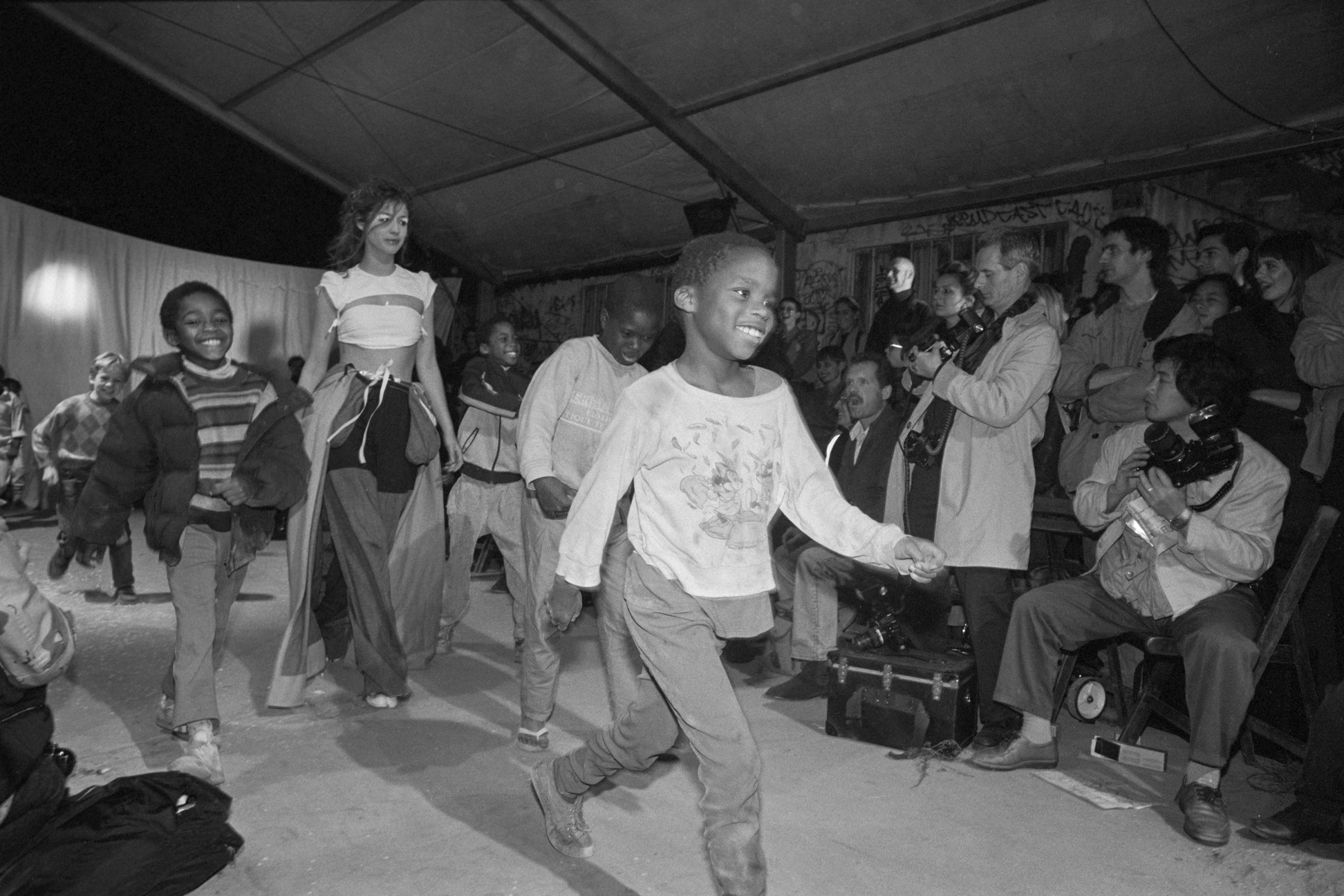
SS90 Fashion Show (1989) | Πηγή εικόνας: assets-us-01.kc-usercontent.com
Το σόου του Margiela αποθεώθηκε από τη βιομηχανία της μόδας, η οποία, αν και φαινομενικά, άρχισε να επανεξετάζει τη σημασία της συμπερίληψης. Σήμερα, πολλοί οίκοι μόδας στέκονται ενεργά απέναντι από τα ομολογουμένως πολλά ζητήματα που ταλανίζουν την εποχή μας. Κινήματα σαν το MeToo απέκτησαν φωνή και μέσα από τις επιδείξεις οίκων όπως η Chanel (Fashion Show 2015), ενώ και οι Dior και Fendi αποφάσισαν να σταθούν δίπλα στον φεμινισμό, προβάλλοντας περισσότερο δυναμικά σύνολα στις Εβδομάδες μόδας του Παρισιού και του Μιλάνο το 2020.
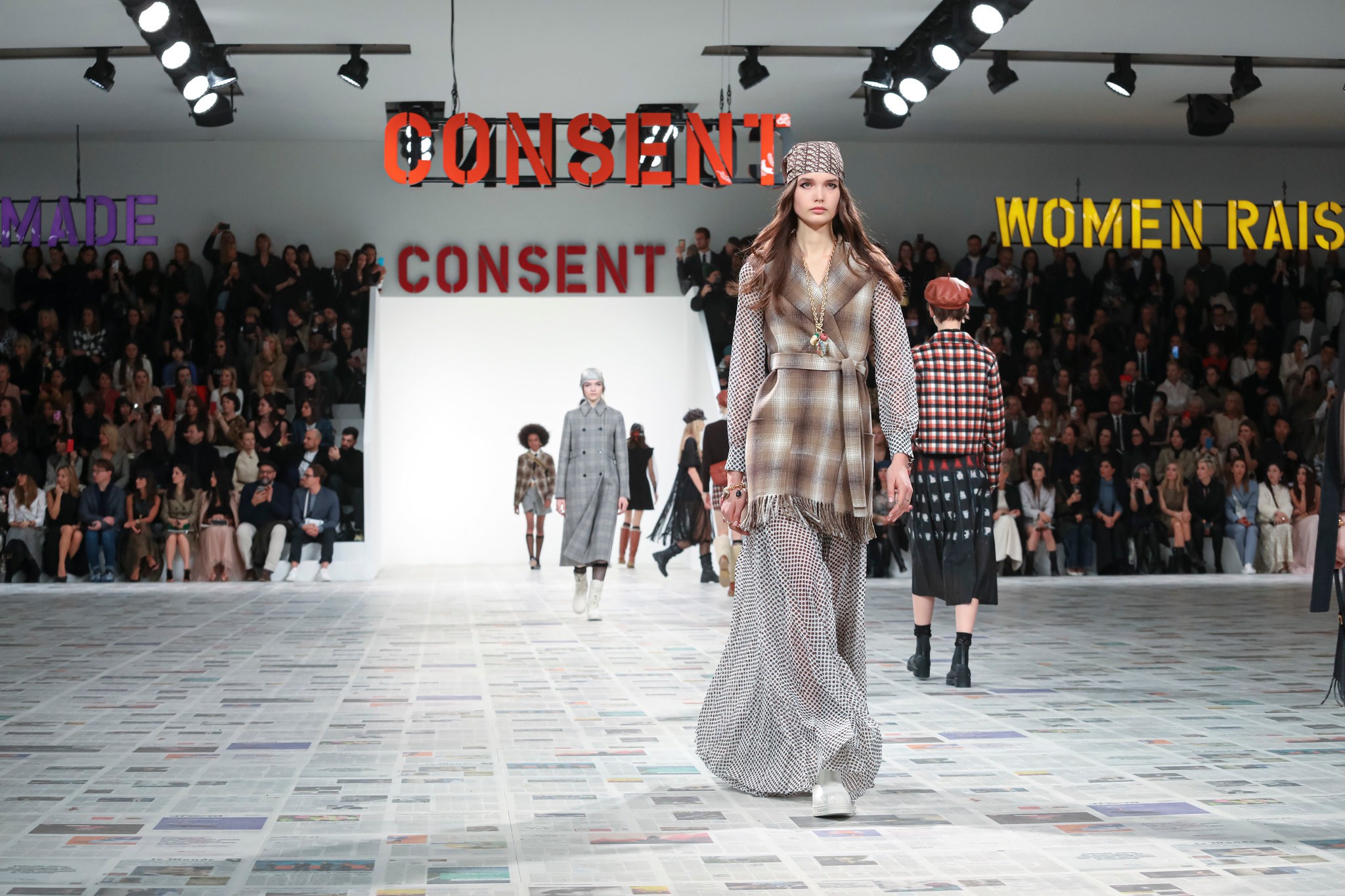
Dior AW20 | Πηγή εικόνας: static01.nyt.com
Πέραν των κοινωνικών αναφορών, πολλοί fashion designers έχουν εκφραστεί ανοιχτά και σε πολιτικό επίπεδο. Ο Walter van Beirendonck, στην Εβδομάδα μόδας του Παρισιού το 2015, εκφράστηκε ανοιχτά κατά της τρομοκρατίας, αναφερόμενος στο αιματηρό επεισόδιο του Charlie Hebdo της ίδιας χρονιάς.
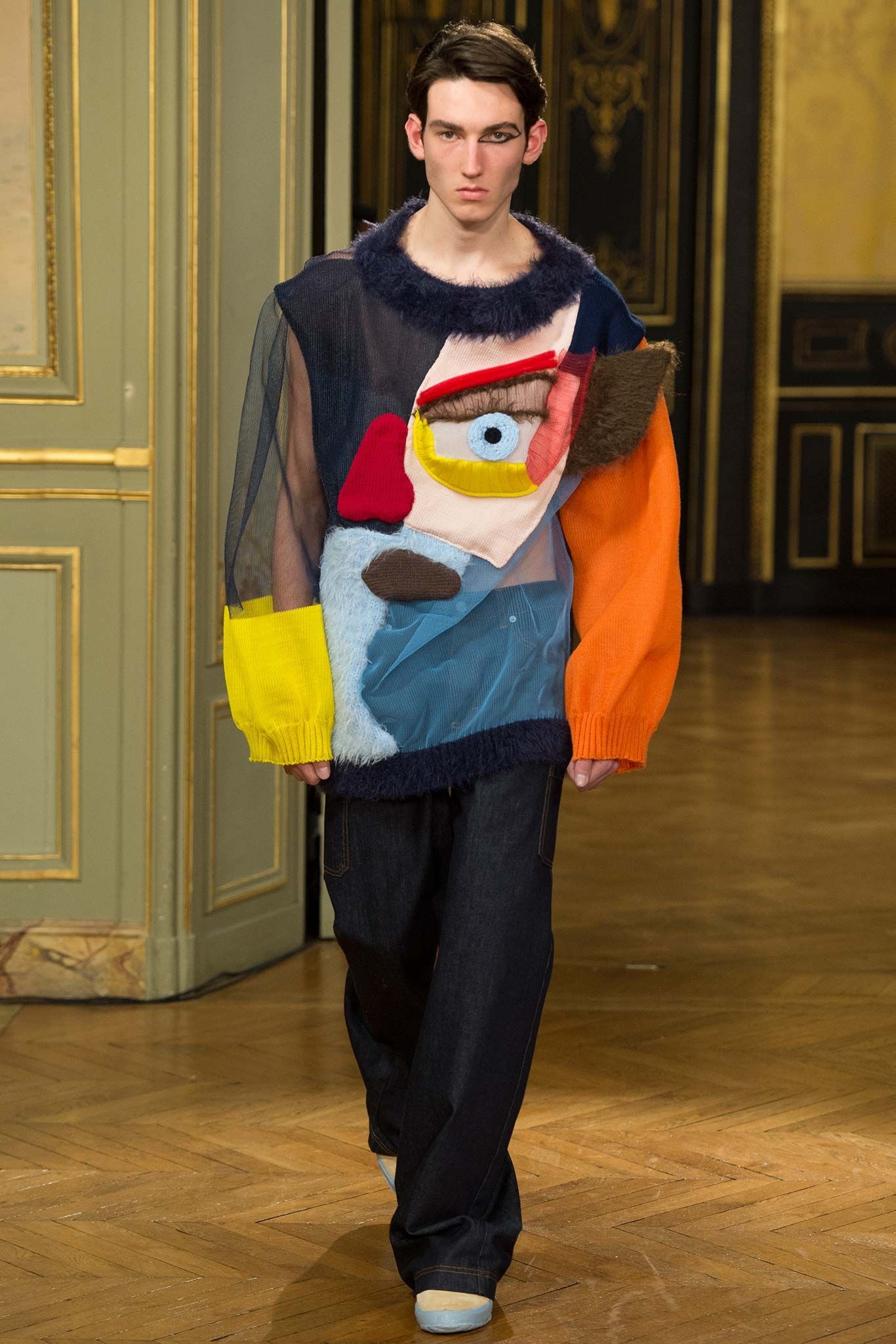
Walter van Beirendonck (Aπό Εβδομάδα μόδας Παρισιού, 2015) | Πηγή εικόνας: i.pinimg.com
Φυσικά, δεν θα μπορούσαμε να παραβλέψουμε την αναφορά στον Alexander McQueen και τις διφορούμενες για πολλούς, εμβληματικές για άλλους, επιδείξεις της δεκαετίας του 1990. Από το εξώφυλλο του DAZED του 1998 -όπου για πρώτη ίσως φορά δόθηκε βήμα στη μόδα σε ανθρώπους με τεχνητά μέλη σώματος- μέχρι το Voss του 2001 -στο fashion show του οποίου γίνονται ανοιχτά αναφορές στις διαταραχές της ψυχικής υγείας, ένα θέμα ταμπού για την κοινωνία της εποχής-, ο McQueen ήταν εκεί για να προκαλέσει σκέψεις και ακραία -τις περισσότερες φορές- συναισθήματα, για γεγονότα και θέματα που αφορούν το κοινωνικό γίγνεσθαι.
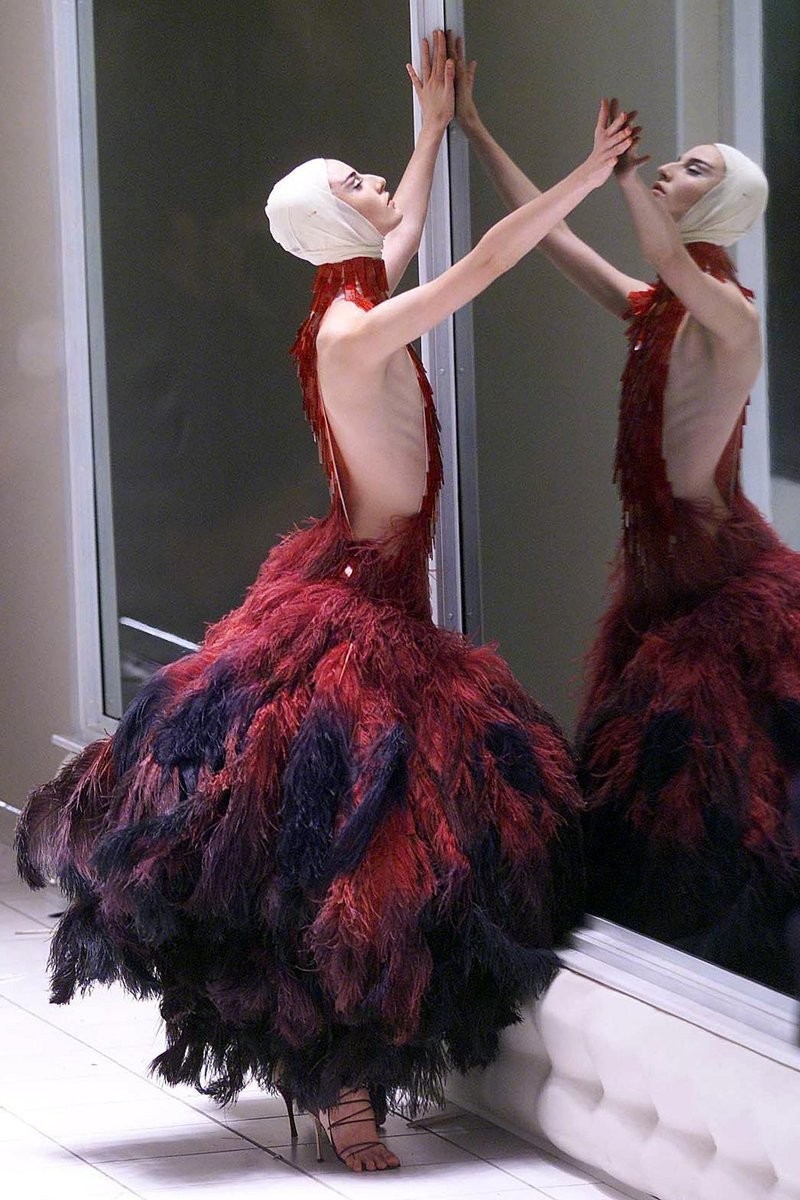
Από το Voss (Spring-Summer 2001, Alexander McQueen) | Πηγή εικόνας: images.squarespace-cdn.com
Αναλυτικότερα, με το εξώφυλλο του DAZED o McQueen έγινε ο πρώτος που άνοιξε τη συζήτηση για τη διαφορετικότητα της ομορφιάς, αποστασιοποιώντας τον εαυτό του από την «κλασσική» ομορφιά. Με τον τρόπο αυτόν, κατάφερε να δώσει βήμα στα άτομα που μέχρι τότε, δυστυχώς, βρίσκονταν στο περιθώριο ενός χώρου, όπου μόνο η «τελειότητα» μπορούσε να αναδειχθεί.
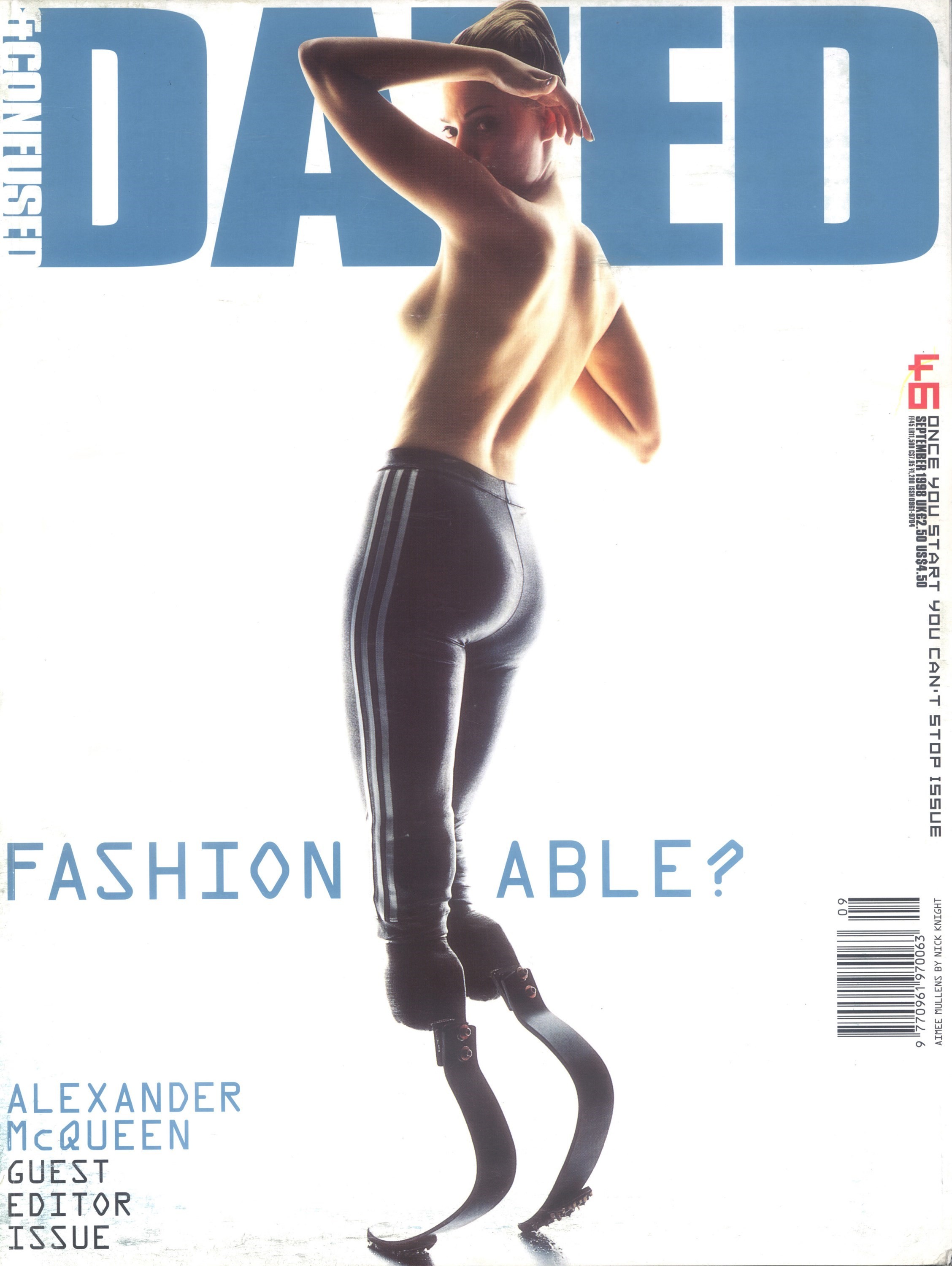
Alexander McQueen (συνεργασία με Nick Knight and Katy England), 1998 | Πηγή εικόνας: images-prod.dazeddigital.com
Το Fashion Revolution
Εκτός, όμως, από την έξω-της-βιομηχανίας κοινωνία, ο χώρος της μόδας έχει να αντιμετωπίσει και την εκμετάλλευση στο εσωτερικό του. Με σκοπό να αναδείξει και να αντιμετωπίσει αυτό το πρόβλημα, που εντοπίζεται κυρίως στην αλυσίδα εφοδιασμού, το 2013 ιδρύθηκε το μη-κερδοσκοπικό κίνημα Fashion Revolution, το οποίο συνεργάζεται με περισσότερες από 130 χώρες παγκοσμίως. Η χρονιά ίδρυσης δεν είναι τυχαία, αφού το 2013 κατέρρευσε το εργοστάσιο Rana Plaza στο Μπαγκλαντές, σκορπίζοντας τον θάνατο σε 1.134 εργαζομένους. Το εργοστάσιο, που κατασκεύαζε ρούχα για λογαριασμό μεγάλων οίκων και fast-fashion αλυσίδων, ανάμεσά τους των Prada, Gucci, Versace, Benetton, Mango, Primark, Walmart κ.α., είχε κατασκευαστικά προβλήματα, τα οποία είχαν καταγγελθεί επανειλημμένως από τους εργαζομένους, χωρίς, ωστόσο, να εισακουστούν. Με σκοπό, λοιπόν, να ακουστούν οι εργαζόμενοι πίσω από τη λάμψη των fashion shows, το Fashion Revolution και οι ιδρυτές του, Carry Somers και Orsola de Castro, προσπαθούν να απαντήσουν στο ερώτημα Who Made My Clothes?, στρέφοντας το παγκόσμιο ενδιαφέρον στην ανάγκη για μεγαλύτερη διαφάνεια στη βιομηχανία της μόδας, στοχεύοντας στην ευαισθητοποίηση για τα δικαιώματα των εργαζομένων, που, πάντα, μένουν στην αφάνεια.
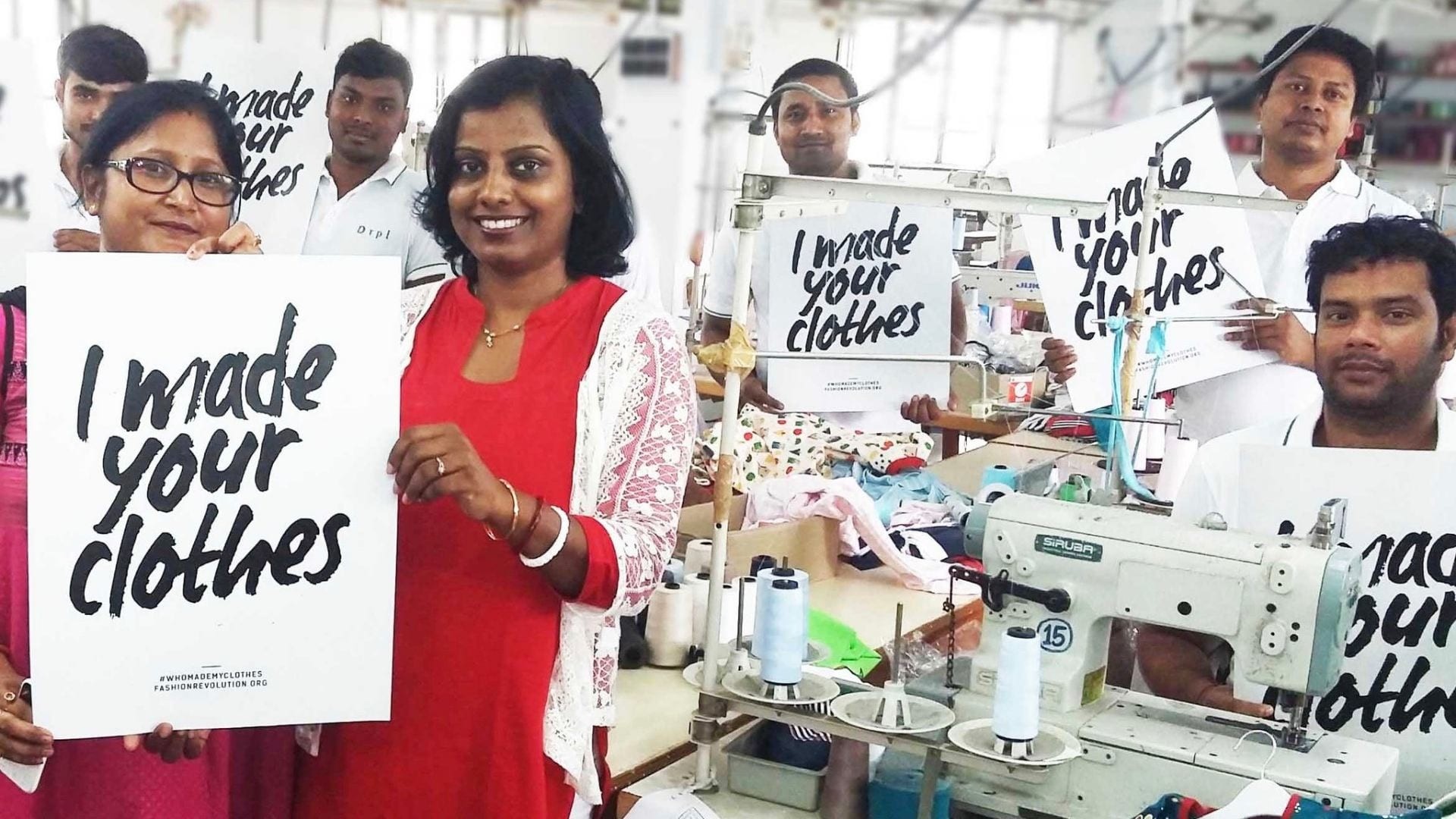
Πηγή εικόνας: cpb-eu-w2.wpmucdn.com
Φυσικά, αν και το κίνημα προσπαθεί να κινητοποιήσει τους καταναλωτές και να ενημερώσει τις κυβερνητικές αρχές, έχοντας παραδόξως και τη στήριξη πολλών fast-fashion εταιρειών, ήταν αναμενόμενο να δεχτεί και σωρεία κριτικών από brands που αμφισβητούν τις μεθόδους του.
Πραγματικό ενδιαφέρον ή απλώς μία τάση;
Η πολιτική που ακολουθεί η βιομηχανία της μόδας φαίνεται να δίνει το έναυσμα για μία στροφή της κοινωνίας, καθιστώντας τον εαυτό της παράδειγμα των επιτακτικών αλλαγών και της κοινωνικής ευαισθητοποίησης. Ωστόσο, το κατά πόσο είναι εκούσια η υιοθέτηση αυτών των πολιτικών, δεν μπορεί να απαντηθεί θετικά ή αρνητικά προς το παρόν. Ένα παράδειγμα των αμφιλεγόμενων «πρακτικών κοινωνικής ευαισθησίας» είναι και η στροφή των μεγάλων οίκων μόδας στην επαναφορά πολύ αδύνατων μοντέλων στη φετινή Εβδομάδα μόδας του Παρισιού, γεγονός που έρχεται σε πλήρη αντίθεση με τις πολιτικές των οίκων περί συμπερίληψης και προώθησης του Body Positivity κινήματος. Έτσι, καταλαβαίνουμε ότι μόνο ο χρόνος θα δείξει αν θα συνεχιστεί αυτή η θετική πορεία της μόδας, που πάντα καλώς ή κακώς θα επηρεάζει την κοινή γνώμη.
Πηγές / Περαιτέρω ανάγνωση
J. Waters (2015). Fashion’s most iconic political statements. Aπό: dazeddigital.com.
M. Zee (2020). What Stella McCartney Taught Us About Sustainability. Από: lofficielusa.com.
Υ. Kim (2022). COPENHAGEN FASHION WEEK ANNOUNCES TO GO FUR-FREE. Από: hypebae.com.
Vrencoska, Gordana. (2009). POLITICAL STATEMENTS IN CONCEPTUAL FASHION: THE VOICE OF NATIONAL SENTIMENTS AS A SELF-REFERENCE IN THE READY-TO-WEAR COLLECTIONS OF ALEXANDER McQUEEN AND HUSSEIN CHALAYAN.
Sustainable Fashion: The New Luxury | Marina Spadafora | TEDxLaRomana. Από: youtube.com.
Caroline Elenowitz-Hess (2022) Reckoning with Highland Rape: Sexuality, Violence, and Power on the Runway, Fashion Theory, 26:3, 399-417, DOI: 10.1080/1362704X.2020.1846325
**Ολόκληρο το Fashion Show 2023 του Balenciaga, στο: youtu.be.
Περισσότερα για το Fashion Revolution Movement, στο: fashionrevolution.org.




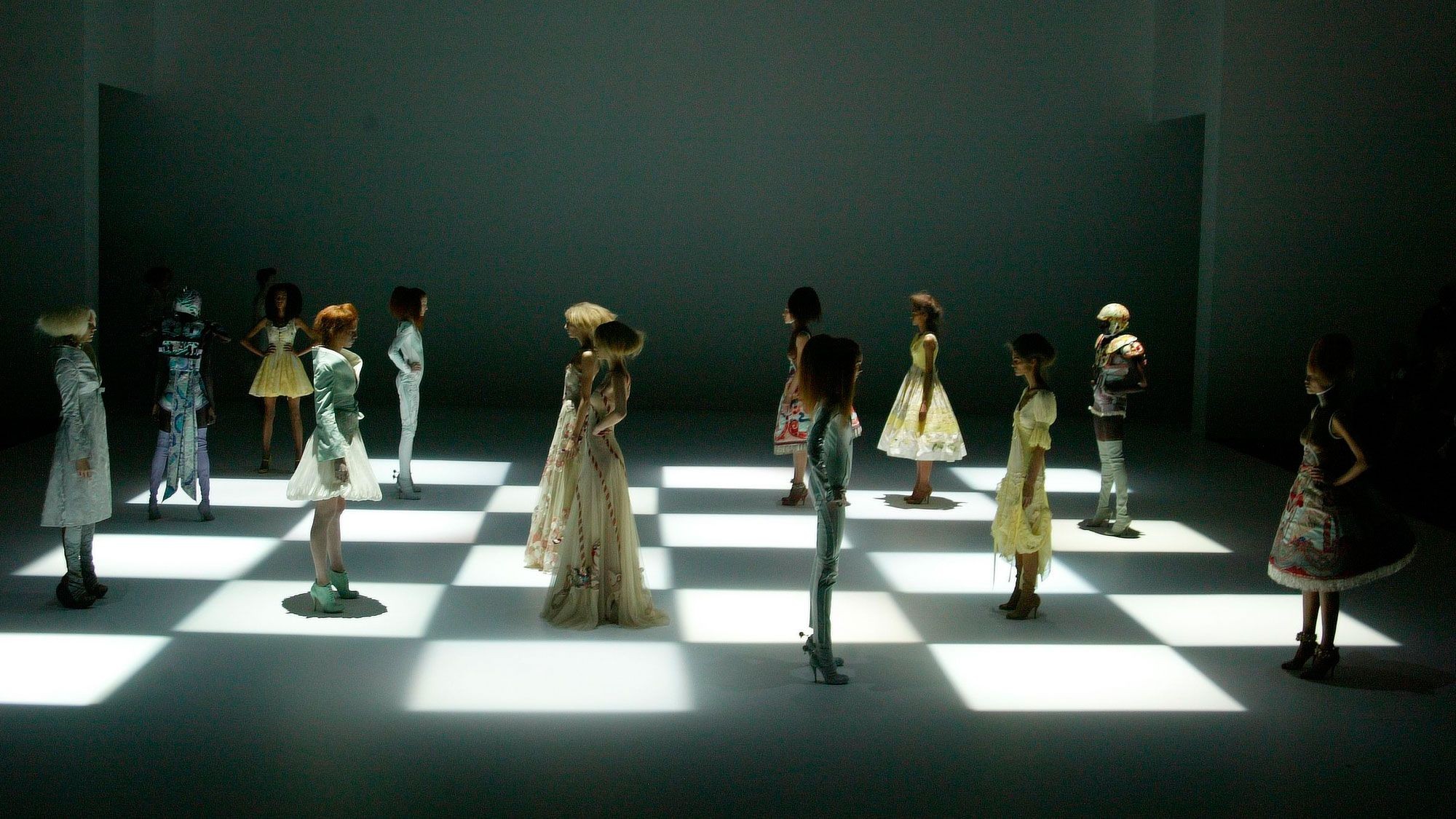
.jpg)
.jpg)
